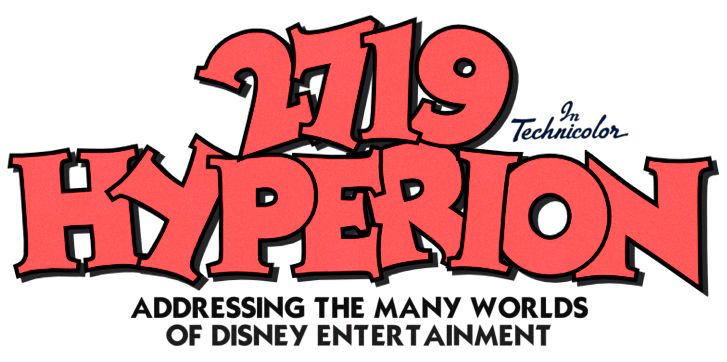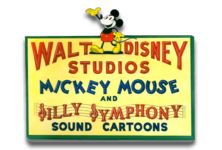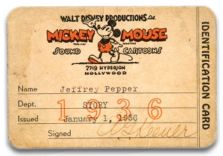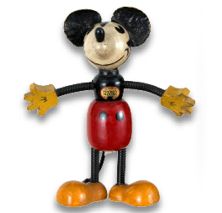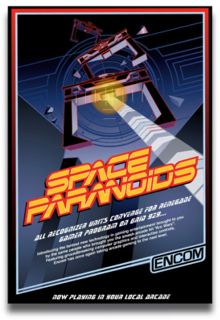
Vastly underrated, largely unrecognized, and sadly little discussed by even the most serious and well respected of Disney historians is the 1948 animated feature
Melody Time. It is in many ways an unheralded classic and a very notable showcase for many of the studio's most talented writers, artists and animators. It was released six decades ago on May 27, 1948.
The initial lack of financial success for
Fantasia forced Walt Disney to abandon plans for successive reissues of that film with new material, but he did in fact revisit the style and structure of
Fantasia, though not its classical music format, in both
Make Mine Music which followed in 1946, and then
Melody Time. Along with the other late-1940s "package" films
Fun and Fancy Free and
The Adventures of Ichabod and Mr. Toad, the films quickly lost their identities when Disney chose to subsequently break them apart into individual sequences for later theatrical releases and television airings. It was not until the mid-1990s that
Melody Time emerged again in its original form, though albeit in very low profile Disney Channel airings and then a few years later in home video releases that, at least in America, included the unnecessary editing of cigarette smoking references. These factors, combined with the film's very distinct post-World War II popular music have sadly served to diminish its otherwise significant artistic and creative achievements. Even contemporary critics tend to still compartmentalize the film, analyzing and discussing its component parts rather than addressing its overall theme and presentation.
Melody Time is comprised of seven musical vignettes--
Once Upon a Wintertime,
Bumble Boogie,
The Legend of Johnny Appleseed,
Little Toot,
Trees,
Blame It on the Samba and
Pecos Bill--presented in the form of an overall musical program, somewhat akin to a concert hall program. Though it jettisoned the classical music trappings of
Fantasia, it still retained that film's prominent theme of artistic interpretation. Each sequence begins with a paintbrush and canvas introduction. Though generally well received, most criticisms of the film focused on these connecting narratives, considering them generally weak, and undermining the film's overall presentation. While generally praising
Melody Time's individual segments, Leonard Maltin remarked in his book
The Disney Films:
 "What Melody Time lacks is unity. The paintbrush format and Buddy Clark's introductions are a poor substitute for cohesion, and, though one can enjoy the various segments, there is a feeling, when Pecos Bill brings the film to an abrupt conclusion, that something is missing. Fantasia was episodic, too, but one felt that it was cut from a whole cloth, as it were. There was never a feeling of fragmentation."
"What Melody Time lacks is unity. The paintbrush format and Buddy Clark's introductions are a poor substitute for cohesion, and, though one can enjoy the various segments, there is a feeling, when Pecos Bill brings the film to an abrupt conclusion, that something is missing. Fantasia was episodic, too, but one felt that it was cut from a whole cloth, as it were. There was never a feeling of fragmentation."
It is an opinion with which I must respectfully disagree. The cohesion that Maltin found lacking is in fact present on a much more subtle yet still overriding level. The overall art direction of
Melody Time represented a dramatic shift away from the more literal artistic interpretations that had characterized most Disney animation up until that point. Mary Blair, Claude Coats and Dick Kelsey, despite the episodic format, provided the film a unified visual style heavy with impressionistic influence and very atypical uses of color. It is a film that is consistently painted in very bold strokes and in many places truly bears the mark of Mary Blair's artistic genius. This is especially apparent in
Once Upon a Wintertime,
Trees and
Johnny Appleseed. It is indeed ironic that Blair's legacy has been recently so wrapped up in
It's a Small World, by individuals who tend to disregard efforts such as
Melody Time where her talent and creativity are so very better represented.
 The Legend of Johnny Appleseed
The Legend of Johnny Appleseed in particular is easily one of the most underrated and unappreciated works of Disney animation. Studio veteran Winston Hibler created a rhythmic narrative and successfully combined it with wonderful songs and Blair's often stunning tableaus. Hibler's eloquent and frequently beautiful poetic narration is complemented so often by Blair's amazing designs. The sequence's final moments that highlight " . . . John's heavenly orchard of apple trees," where apple blossom trees merge into a cloud-filled sky, is simply breathtaking.
And this is not to in anyway discount any of the other six segments.
Once Upon a Wintertime is a holiday greeting card come to life and is especially notable for the aforementioned atypical uses of color. Though brief,
Bumble Boogie is a high energy tour de force through a surreal piano inspired naturescape. Well realized are both
Little Toot and
Pecos Bill, which stylistically come closer in storytelling and design to Disney's then more traditional efforts.
Blame It on the Samba returns to the visually dynamic settings, music and characters of
The Three Caballeros, while
Trees presents a dramatic and again clearly Blair-inspired interpretation of the Joyce Kilmer poem. Ward Kimball's broad interpretation of Pecos Bill is especially well realized.

Similar to
Make Mine Music,
Melody Time is also an entertaining representation of pre-rock and roll American popular music figures. While little remembered today, Dennis Day, Frances Langford, Freddy Martin, Ethel Smith, and most especially the Andrew Sisters and Roy Rogers and the Sons of the Pioneers were well known personalities via both film and radio. For many, it serves as a nostalgic musical time capsule; for others it unfortunately severely dates the movie and diminishes its overall appeal. Regardless, in the history of Disney music, songs such as
Johnny Appleseed's "The Lord is Good to Me," "Blame It on the Samba," and
Pecos Bill's introductory "Blue Shadows on the Trail" deserve far more recognition than they have heretofore received.
The film's most lasting legacy would certainly be the
Pecos Bill segment. Those particular characters successfully transitioned into theme park incarnations over the years, with Walt Disney World's Pecos Bill Tall Tale Inn and Cafe being the most prominent example.
It is unfortunate that
Melody Time has suffered somewhat unfair comparisons to
Fantasia, and also the often very unfair perceptions of stagnant creativity associated with the post-war package films. It certainly deserves better.
Explore the 2719 Hyperion Archives:
What a Character! - Pecos Bill
What a Character! - The Aracuan Bird
Images © Walt Disney Company
 Donald Duck visited the Sunshine State nearly two decades before Walt Disney World emerged out of central Florida swampland in late 1971. Donald and his nephews toured similar swampy landscapes in the 1953 cartoon Don's Fountain of Youth, released on May 30, 1953. The cartoon makers were likely guiding Donald and the boys through an area near St. Augustine. They travel along US Highway 1, and come upon the site of an old Spanish fort, dated 1571. It would appear that background artist Art Riley drew inspiration from both Castillo de San Marcos and the Fort Mantanzas National Monument (pictured) located in Saint Augustine. The Castillo de San Marcos was constructed during the latter decades of the 17th century; Fort Mantanzas was built in the mid-18th century.
Donald Duck visited the Sunshine State nearly two decades before Walt Disney World emerged out of central Florida swampland in late 1971. Donald and his nephews toured similar swampy landscapes in the 1953 cartoon Don's Fountain of Youth, released on May 30, 1953. The cartoon makers were likely guiding Donald and the boys through an area near St. Augustine. They travel along US Highway 1, and come upon the site of an old Spanish fort, dated 1571. It would appear that background artist Art Riley drew inspiration from both Castillo de San Marcos and the Fort Mantanzas National Monument (pictured) located in Saint Augustine. The Castillo de San Marcos was constructed during the latter decades of the 17th century; Fort Mantanzas was built in the mid-18th century.
